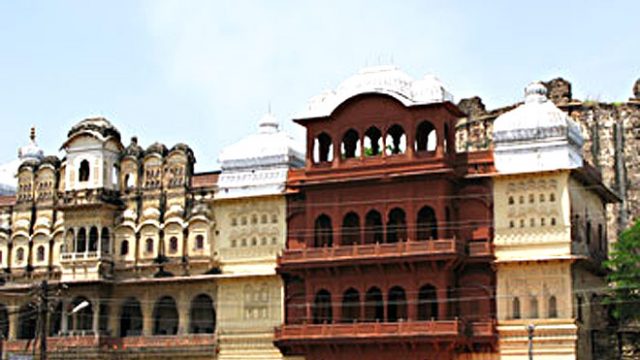Kota
Once a princely city, Kota has now become the ‘coaching class’ capital of India. You will institutes offering courses to pass almost every competitive exam in India. A day is enough to see the major attractions of the city – Kota Barrage, Chambal Garden, Garh Palace (including the Maharana Madho Singh Museum with its collection of miniature paintings), the Government Museum in Brajvilas Palace, Jag Mandir, etc. The fine Kota Doria sari and dress accessories are worth buying. Kota is also known for its Dussehra festival. Being on the Mumbai-Delhi railway line (the Mumbai-Delhi Rajdhani Train stops here too) and well connected to Jaipur, Kota is the best entry point for the region.
Badoli
About 48km from Kota, it has one of the oldest temple complexes of Rajasthan. You can see the 9th century temples on way to the Rana Pratap Sagar Dam and Bhainsrodgarh (a scenic fort on the right bank of the Chambal river).
Baran
About 80km away from Kota, this is actually a conglomeration of 12 villages. There are several old temples in the area, including the 11th century Bhanddeora Temple of Ramgarh, 9th to 13th century temples in Atru, 9th century temples near Sarthal, etc.

Bundi
Fairly uncrowded and steeped in Rajasthani culture, Bundi (36km away from Kota) will remind you what Rajasthan’s cities looked and felt about five to six decades ago. You cannot miss the towering Taragarh (the Star Fort) that looms over the city. Devote half a day to explore the entire fort that dates back to the 14th century. Reaching the upper tiers is quite a legwork. Those on a short tour, visit the Palace at the lower tier, which contains some of the best miniature paintings of the Rajasthani school. The Chitrashala, a special gallery of miniature murals, contains scenes from the Ragmalas pertaining to Indian classical music, Raslila pertaining to the life of Krishna, etc. It is best to be accompanied by a government authorised guide who can tell you in details about the fort and the paintings. The other attractions of Bundi include the sculpted step wells of Raniji Ki Baori, the 84-pillar cenotaph, the Sukh Mahal or the summer palace on Sukh Sagar Lake, etc. If you are looking to buy local products, there are miniature paintings, colourful lac bangles and Kota Doria weaves. Kota is also known for its Kajli Teej festival, usually held in August-September.
Darrah Wildlife Sanctuary
This former royal hunting ground is about 50km away from Kota. A thickly forested and hilly sanctuary, it is known for leopards, sloth bear, wolf, chinkara, etc.

Jhalawar
Located at the edge of the Malwa plateau, Jhalawar is an explorer’s delight. Not yet on the regular tourist itinerary, it remains uncrowded for most of the year. The major attractions include the Garh Palace (do not miss the paintings and mirrors of the Zanana Khas Mahal) and the Government Museum. Jhalarpatan (6km away) with its 10th century Sun Temple and the 7th century temples on the banks of the Chandrabhaga river (7km away) can be seen in a day’s excursion.
Keshavraipatan
Located about 45km away from Bundi, this place is known for its uniquely built 17th century Vishnu Temple.
Information: The Hadoti region largely consists of Kota, Bundi and Jhalawar and their neighbouring towns and villages. It is still not on the regular tourist itinerary though Bundi attracts a fair number of foreigners, especially from France, who come to see the miniature paintings. Rajasthan Tourism’s tourist lodges, basic but comfortable, are located in Kota, Bundi and Jhalawar. There are a few good resorts in Bundi and a palace hotel in Kota.




